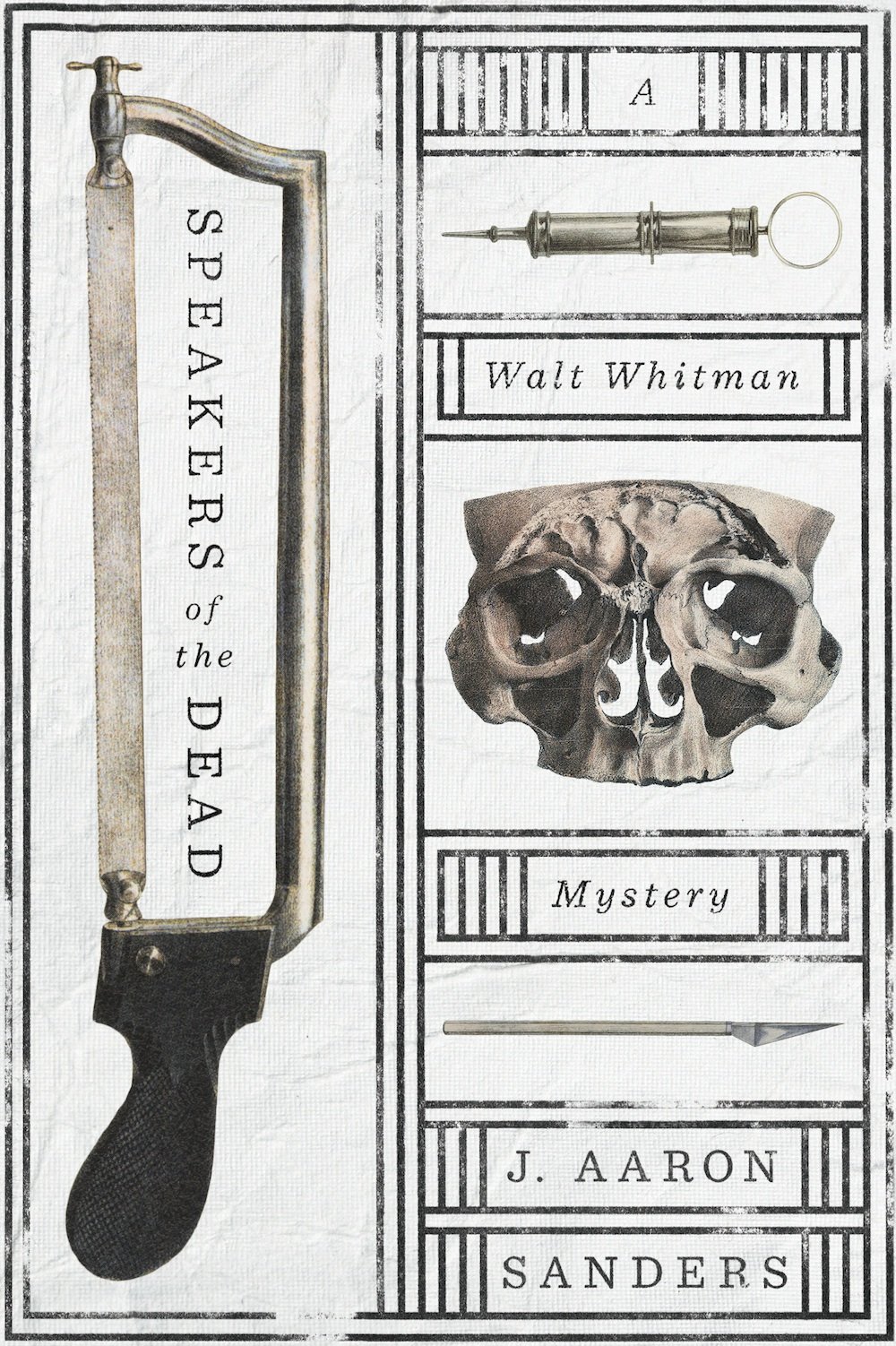In the muddy, soot-blackened days of early Manhattan, a tiny cabal of scientists pushes for the advancement of medicine and anatomical understanding. A smaller group runs a dangerous underground business in procuring dead bodies. And the general public is disgusted by them all.
Walt Whitman, cub reporter for the Aurora newspaper is both friend to the women’s medical college and curious about the grave robbing trade. His research for an article turns up more than he bargained for. He uncovers a nefarious gang, corrupt city officials, false convictions and more.
The book is purely a work of fiction, though it features real figures. Whitman, of course, is still thrashing about in search of his true calling. He makes rash decisions, ignoring the warnings of those who care about him.
Elizabeth Blackwell, a real pioneer in medicine and a supporter of female doctors, also figures prominently in the story, though very little of what’s depicted in the book actually happened to her.

Sanders finds a place for all of the archetypal characters — sneering gang boss, reluctant prostitute, conflicted street urchin, hardened coroner, naïve child — in the story. Its strength lies in its vivid description, when the author allows it to come pouring out.
Maggie Runkel is buried near the back of St. Patrick’s Old Cathedral graveyard at Mulberry and Prince Streets. Walt Whitman and Henry Saunders have set up watch behind a graveside tree, which affords no shelter from the swirling wind that slashes through Walt’s clothing. He cannot remember ever feeling so cold in all his life, and his father’s words come tumbling back to him: The worst is yet to come. His father the optimist.
The cemetery surrounds the cathedral — headstones jut like crooked teeth out of the grey, unyielding ground. The cathedral itself is dark and quiet, the priest having locked up and retired to the rectory hours ago. ~Pg. 43
Where it finds something uncommon is the portrayal of Whitman as gay. A subplot to the main mystery and adventure of grave robbing, he grapples with love and loss as any character would. It is only an aspect to a much more complicated character.
If not stunning, the book is solid. There is a powerful controversy at the heart of the story which largely pushes it forward. It in fact acts a skeleton on which to hang a more complex issue for dissection and study.
Many thanks to Alie at Blue Rider Press / Plume for the review copy.
Series: Walt Whitman Mysteries
Paperback: 320 pages
Publisher: Plume (March 1, 2016)
Language: English
ISBN-10: 014312871X
ISBN-13: 978-0143128717
Product Dimensions: 5.3 x 0.6 x 8 inches

